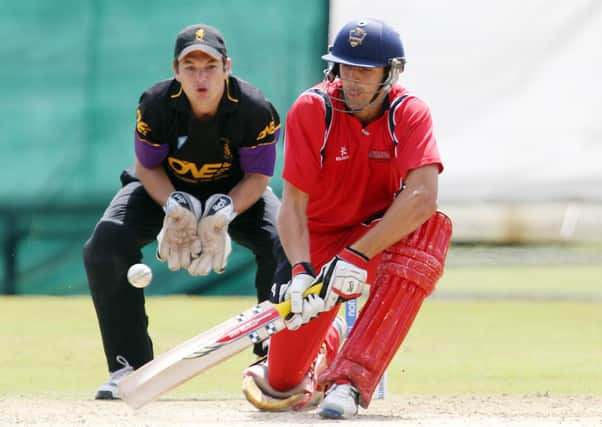Alistair Bushe: NCU’s eight-club top flight has not been a failure, there is risk in discarding it


Rightly, an 18-game league campaign of 50-over matches was considered far too arduous by many of the protagonists, including players, spectators, officials and, yes, journalists.
As Twenty20 began its rise and other competitions came to the fore, the season had dragged habitually towards late September, bodies aching, minds scrambled, and many teams shorn of key players who had already discarded their whites and migrated to winter sports.
Advertisement
Hide AdAdvertisement
Hide AdThere were few dissenting voices to the newly streamlined top flight, with many of the clubs who took habitual beatings at the wrong end of the table happy to take refuge in the less cut-throat business of Section One. For the big boys, a 14-game campaign was initially less of a grind, especially as the matches that were gone had been mostly less than competitive.
Eight years on and the narrative has now come full circle, with the feeling that an eight-team Premier League has become counterproductive. The best players have increasingly migrated to a small group of clubs and for many in Section One, the Premier League is seen as elitist and only by throwing a wad full of cash at the problem, can you hope to compete.
Even the big boys now seem to agree. The NCU has published a road-map back to an expanded top flight of 12 clubs, and there have been few objectors, even if Covid-19 and the decimation of this season’s programme means the new structure will not now be implemented until 2022.
But has the top flight of eight clubs been the disaster that it is now implied by shelving it after less than a decade?
Advertisement
Hide AdAdvertisement
Hide AdRemember that prior to 2011, no NCU club had lifted the Irish Senior Cup for 16 long years. In fact, the NCU’s performances in club cricket’s premier competition in Ireland had become so embarrassing that many clubs openly admitted they were happy to depart at the first stage. They had no expectation of success so why prolong the agony?
Waringstown and Instonians changed all that in 2011, the last season of the 10-team domestic top flight, though the villagers’ run to the final was inspired by the brilliance of young South African professional Obus Pienaar in the prime of his batting life.
However, as the eight-team Premier League bedded in, the NCU became a sustained Irish Cup force again. Waringstown went on to win another three Irish Cups in four years, and lose another two finals, while Instonians have been regular features in the latter stages. North Down blew a golden chance of reaching the final in 2014, while CIYMS should have beaten Waringstown and reached last year’s final.
But the critics point to the negatives. With the interprovincial competitions becoming more important, so the pressure grew on club players to showcase themselves with the bigger clubs.
Advertisement
Hide AdAdvertisement
Hide AdThe last decade is littered with many players who have jumped ship from the clubs where they learned their trade to a small group of Premier League elite, to the possible detriment of the greater good.
There has been an undeniable negative impact around the union as the talent increasingly focused around the likes of Instonians, Waringstown, North Down and CSNI while big-spending CIYMS cherry-picked players from both the NCU and North West. The gap between Section One and the Premier League increasingly became a chasm that only a few wanted to bridge, and that process inevitably involved financial peril. Clubs have folded, some third and fourth elevens have gone, even at the biggest clubs.
The plan for 2022 is for a 12-team Premier League, with the top four teams in Section One in 2021 joining the existing eight Premier League teams in 2022.
The teams would probably play each other once (11 games) and then split into two six-team divisions in the middle/end of July. The teams would play a further five games against the teams in their side of the split, giving a total of 16 league games.
Advertisement
Hide AdAdvertisement
Hide AdThe principles behind the changes are sound, but a note of caution, there is no guarantee that this will resurrect the flagging interest in local cricket. Say what you like about an eight-team top flight, but it has been mostly fiercely competitive, it has resurrected the NCU’s Irish Cup standing and provided a sound stepping stone to the interprovincials.
There is a real danger of embarrassingly one-sided mismatches which will benefit absolutely no-one and expecting a split in mid-season, with all our weather problems, to work seamlessly seems a trifle optimistic.